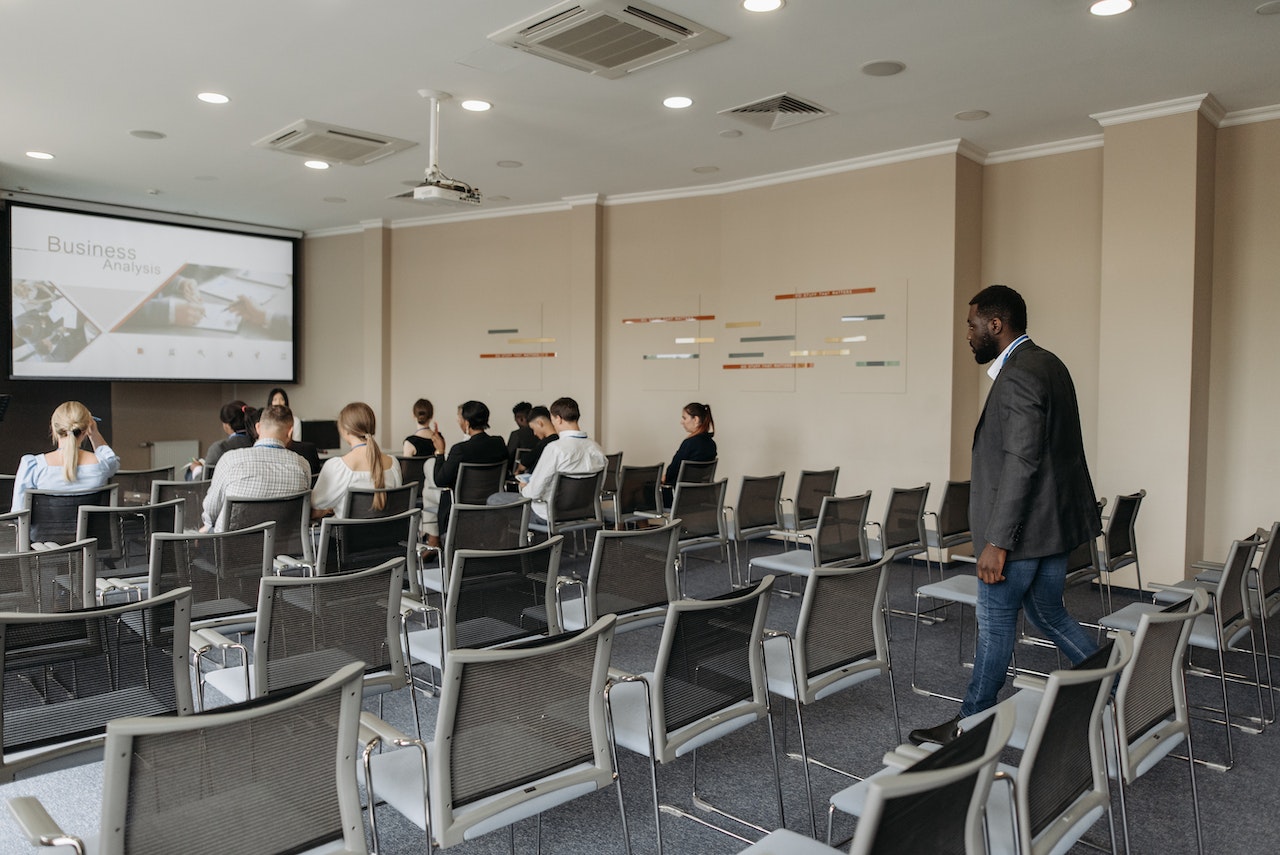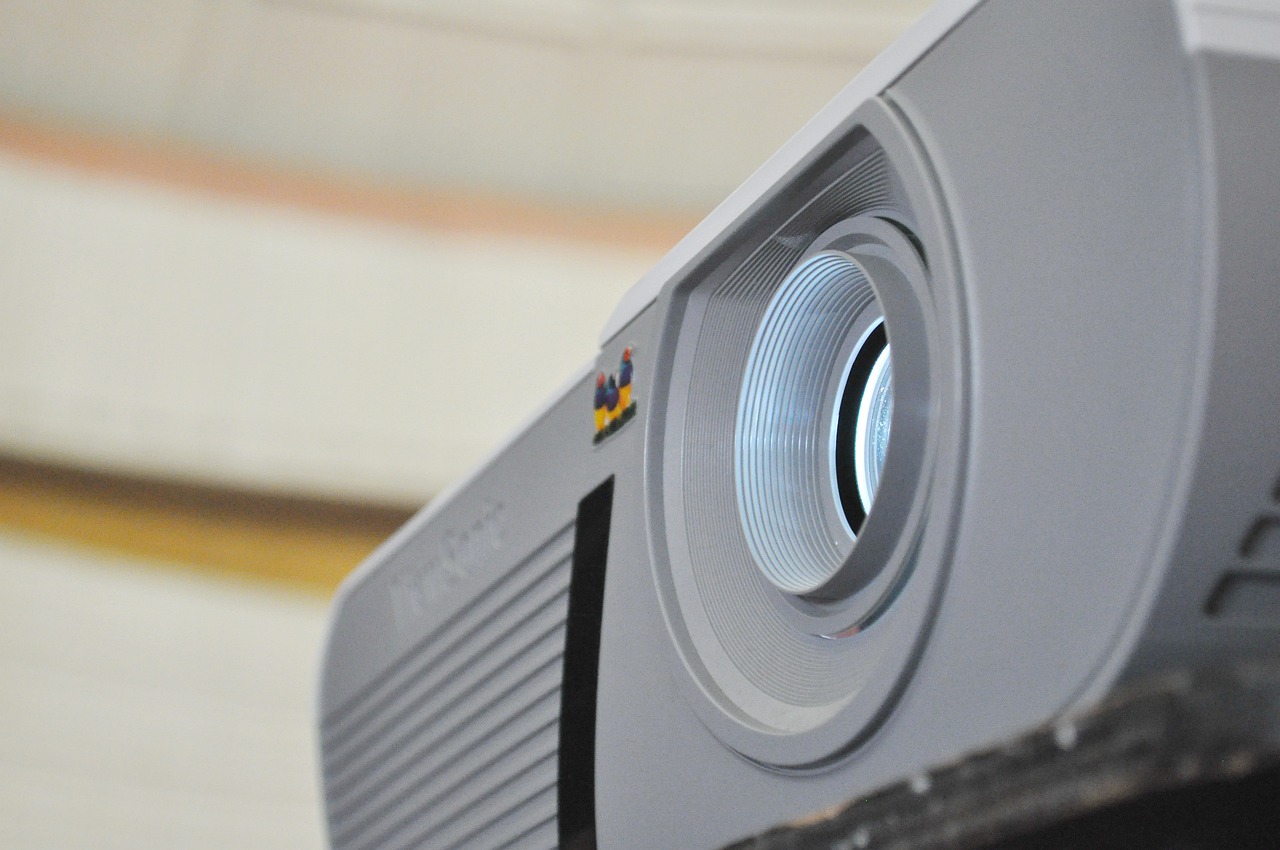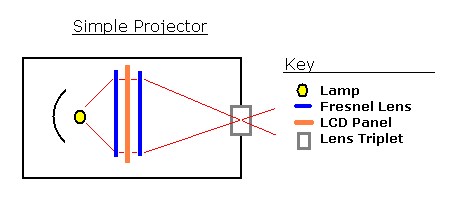How Do Projectors Work? Detailed explanation
- 30 Mar 2025 09:37
- 225

In today's world, projectors are essential. They aren't just used in dark classrooms or movie theaters anymore; they are now in homes, businesses, and other places. These flexible machines have changed how we look at and share knowledge. But how do projectors work? This write-up will examine projector operation and how they project images and videos onto screens or other surfaces. By learning the workings of projector technology, you'll better understand how important these devices are and how they improve our lives. Let's read on then.

What are Projectors?
Firstly, one must understand what a projector is to know how it operates. A projector serves as an output device that takes images from a computer or Blu-ray player and displays them by beaming them onto a screen, wall, or any surface. The surface onto which the projection is directed is commonly big, flat, and softly colored. A typical projector consists of optical components, ventilation systems, and circuits. It employs convex lens principles for image projection. Projectors find widespread use in the current era, from homes and offices to educational institutions and recreational establishments. They come in various types depending on diverse technologies, including DLP, CRT, and LCD. Moreover, it comes in a compact form and is lightweight, usually only weighing a few pounds.
How do projectors work?
The working behind projectors is closely connected to how they are built. So, we will thoroughly examine its working combined with the projector's structure.
Basic components of a projector
The projector's fundamental components include a
- Light source or light bulb
- Condenser or lens system
- Plane or flat mirror
-
Light Source
Initially, the light emitted by the source travels through the projector's condenser mechanism, which focuses and directs the light toward a plane mirror. This mirror then reflects the light in parallel, ultimately projecting its display on the surface.
-
Condenser System
The condenser system of a projector comprises several essential elements. These elements include
- Condenser
- Auxiliary condenser
- Fresnel or threaded lens
- Glass
Components of Condenser System
The threaded lens, also called the Fresnel lens, consists of a pair of thin plexiglass plates featuring concentric circular patterns. Its remarkable features include a large diameter, lightweight construction, and excellent light transmission capabilities. However, it's essential to note that the Fresnel lens functions optimally at 70°C. Beyond this temperature threshold, the projector can experience distortion, potentially shortening its lifespan. An auxiliary condenser, often called a crescent lens, is strategically positioned adjacent to the condenser and a light bulb. It helps in maintaining a cool surface for the Fresnel or threaded lens. Furthermore, an object lens is mounted to a fresnel lens that projects images and writes on a projection film. It can also serve as a tool for conducting experiments or as an instructional aid. 

-
Plane Mirror
This mirror works by converting the vertical direction of light from the bulb into the horizontal or lateral direction, which can then be displayed on the screen's surface.
-
Flat Reflector
This reflector also plays a crucial role in how well the projector works. If it's not there, the light from the source can go through the lens and bounce back, making the image less bright. It could shorten the projector's lifespan due to increased temperature inside. To achieve the projector's purpose of adjusting the direction of light and projecting images or videos on the screen, the projector needs a plane mirror turned on to adjust the light's direction. 

-
Electrical and Ventilation Equipment
Also, the projector has important ventilation and electrical components, like fans and transformers. The role of the transformer is to change the 220-volt AC power from the wall into 24-volt AC, which the projector's light bulbs need to operate. Typically, the projector uses common bromine tungsten lamps of 24-volt, 300-watt. When these lamps are in operation, they generate a lot of heat, causing an increase in the inside temperature of the projector. To protect the electrical components and threaded lens from potential damage, the squirrel cage ventilation fan is not only used to reduce the temperature but also to remove excess heat produced by the projection lamp.
Types of Projectors
In the above-stated section, you have found the knowledge on “how do projectors work” in general. But, there are many different types of projectors in the market, and they work slightly differently than others. So, let's discuss the main ones.
-
LCD Projectors
LCD projectors are constructed with three glass panels containing liquid crystals. Additionally, they feature three standard mirrors and two dichroic mirrors. When you're ready to enjoy your visuals using an LCD projector, white light is directed through the dichroic mirrors and divided into three colors: red, green, and blue. These three colors are then sent to separate LCD panels, transforming and combining them to produce a vivid single image projected onto the large screen.
-
DLP Projectors
Digital Light Processing (DLP) is a relatively recent innovation. They are based on digital micromirror devices (DMD). Within a DMD there are nearly 2 million tiny mirrors. The electric circuit in it controls how each mirror is positioned. More tiny of them on a chip means more pixels in the image. However, a color wheel separates white light into red, blue, and green light. Afterward, these colors are directed onto the small mirrors within the chip. Next, in a fraction of a second, the small mirrors mix the colors according to the video data and send it through a lens, which displays the image on the screen.
-
LCoS Projectors
Liquid Crystal on Silicon (LCoS) is another newer projector technology. These projectors, made with silicon, combine features from both LCD and DLP projectors. Using special mirrors, LCoS projectors operate by dividing a light beam into red, blue, and green. After this filtration, the light goes through different filters before reaching a micro device and then is displayed on the screen through a lens.
-
LED Projectors
LED projectors utilize light-emitting diodes (LED) to generate light. They achieve this by blending red, green, and blue LED bulbs to produce white light filtered through a lens to project an image on the screen. LED projectors use less power, offer improved color quality, and produce less heat than LCD and DLP projectors. Also, they come with minimal maintenance expenses. However, due to their limited brightness, LED projectors may not be the best choice when used in bright environments.
-
Short-throw Projectors
A short-throw projector is typically positioned very close to the screen, usually within 3 to 8 feet. It covers a throw ratio ranging from 0.4 to 1. A short-throw projector can create a big image even when placed close to the screen. It achieves this by having an excellent lens or using a chipset that adjusts the image's shape before projecting it through the lens. This is how short-throw projectors work.
-
Outdoor Projectors
Outdoor projectors are specifically built with high lumens to produce a considerably brighter projected image, suitable for viewing in daylight. How do outdoor projectors work? They operate by taking a source of light, often a powerful lamp or LEDs, and using it to project images or videos onto an outdoor surface, like a screen or a wall. The device contains optical components, such as lenses and mirrors, that focus and direct the light to create a clear and enlarged image. The content to be displayed is usually connected to the projector via cables or wireless technology.
How to Use a Projector?
- Position the projector 1.5 to 2 meters from the screen, ensuring all switches, including any power switches or controls, are in the "off" position. After confirming this, you can proceed to power it on.
- Gently open the mirror cover to its maximum angle.
- Activate the power switch; the light bulb should illuminate, and the fan should begin spinning under normal conditions.
- Adjust the reflector, focus knob, and color edge adjustment knob until the screen displays a bright white surface.
- Always turn off the projector after use and avoid prolonged standby periods.
Advancements in Projection Systems
Modern projectors have impressive advancements like HDR, 4k resolution, and high refresh rates, making them strong contenders for home theater setups. Their portability sets these projectors apart, providing more options and convenience. Also, their flexibility in connectivity ensures that you can easily connect them to various devices, making it convenient to stream from different sources.
Conclusion
In conclusion, choosing the right projector is crucial, and understanding how projectors work is the key to making an informed choice. As we've explored, various projectors operate differently to meet diverse needs. So, knowing the fundamentals of "How do projectors work?" empowers you to choose the ideal one for your unique needs.
